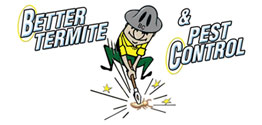Are those bugs in your home termites or flying ants? It can be hard to tell the difference at first glance, but it’s important to know what you’re dealing with to effectively eliminate the problem. In this article, we’ll explore the key differences between termites and flying ants, how to identify each species, and what to do if you find them in your home.
Bugs in the home can be a major annoyance, but it’s important to know what you’re dealing with to effectively get rid of the problem. Two common pests that can cause damage to your home are termites and flying ants. While they may look similar at first glance, they have distinct differences that can help you identify them.
What Are Termites?
Termites are small, white insects that feed on wood and other organic materials. They live in large colonies and can cause significant damage to wooden structures. Termites are sometimes referred to as “silent destroyers” because they can cause damage to your home without being detected until it’s too late.
Types of Termites
There are three main types of termites: subterranean, drywood, and dampwood. Subterranean termites live underground and create tunnels to access their food source. Drywood termites, on the other hand, live inside the wood they’re feeding on and don’t need contact with soil. Dampwood termites prefer wet wood and are often found in areas with high moisture levels.
What Are Flying Ants?
Flying ants, also known as carpenter ants, are often mistaken for termites because of their similar appearance. However, there are a few key differences between the two. Flying ants have a pinched waist and bent antennae, while termites have a straight waist and straight antennae.
Types of Flying Ants
There are many different species of flying ants, but the most common type is the black carpenter ant. These ants are large and black, and can cause damage to wood structures if left unchecked.
How to Tell the Difference
While termites and flying ants may look similar, there are a few key differences that can help you identify which pest you’re dealing with.
Body Shape
Termites have a straight waist and a broad, straight body. Flying ants, on the other hand, have a pinched waist and a narrow, segmented body.
Antennae
Termites have straight, beaded antennae, while flying ants have bent, elbowed antennae.
Wings
Termites have two pairs of wings that are the same size, while flying ants have two pairs of wings, with the front pair being larger than the back pair.
Habitat
Termites typically live underground or inside wood, while flying ants build their nests in wood or other materials.
What to Do if You Find Them in Your Home
If you find termites or flying ants in your home, it’s important to act quickly to eliminate the problem. Here are a few steps you can take:
Identify the Pest
Use the key differences outlined above to identify whether you’re dealing with termites or flying ants.
Determine the Extent of the Infestation
Try to determine how widespread the infestation is. If you only see a few bugs, you may be able to eliminate the problem with DIY methods. However, if the infestation is more severe, you may need to call in a professional exterminator.
Eliminate the Problem
There are several ways to eliminate termites or flying ants, including using bait traps, liquid insecticides, or professional fumigation.
Prevent Future Infestations
Preventing future infestations is key to avoiding another termite or flying ant problem. Here are a few steps you can take:
- Seal all cracks and gaps in your home’s foundation, walls, and roof to prevent bugs from getting inside.
- Keep woodpiles and other organic materials away from your home to avoid attracting termites and flying ants.
- Repair any leaks or areas with high moisture levels to prevent dampwood termites from finding a comfortable habitat.
- Regularly inspect your home for signs of termites or flying ants, such as discarded wings or wood damage.
Termites and flying ants may look similar at first glance, but they have distinct differences that can help you identify which pest you’re dealing with. If you find these pests in your home, it’s important to act quickly to eliminate the problem and prevent future infestations.
FAQs
- Can termites or flying ants cause structural damage to my home?
- Yes, both termites and flying ants can cause significant damage to wooden structures if left unchecked.
- What is the best way to eliminate a termite or flying ant infestation?
- The best way to eliminate a termite or flying ant infestation depends on the severity of the problem. DIY methods may work for smaller infestations, but larger ones may require the help of a professional exterminator.
- How can I tell if I have termites or flying ants in my home?
- Look for key differences in body shape, antennae, and wings to determine whether you’re dealing with termites or flying ants. Discarded wings and wood damage are also signs of an infestation.
- How can I prevent future infestations of termites or flying ants?
- Seal cracks and gaps in your home’s foundation, keep woodpiles away from your home, repair leaks or areas with high moisture levels, and regularly inspect your home for signs of pests.
- Are termites or flying ants dangerous to humans?
- While termites and flying ants are not dangerous to humans, they can cause significant damage to your home if left unchecked.




